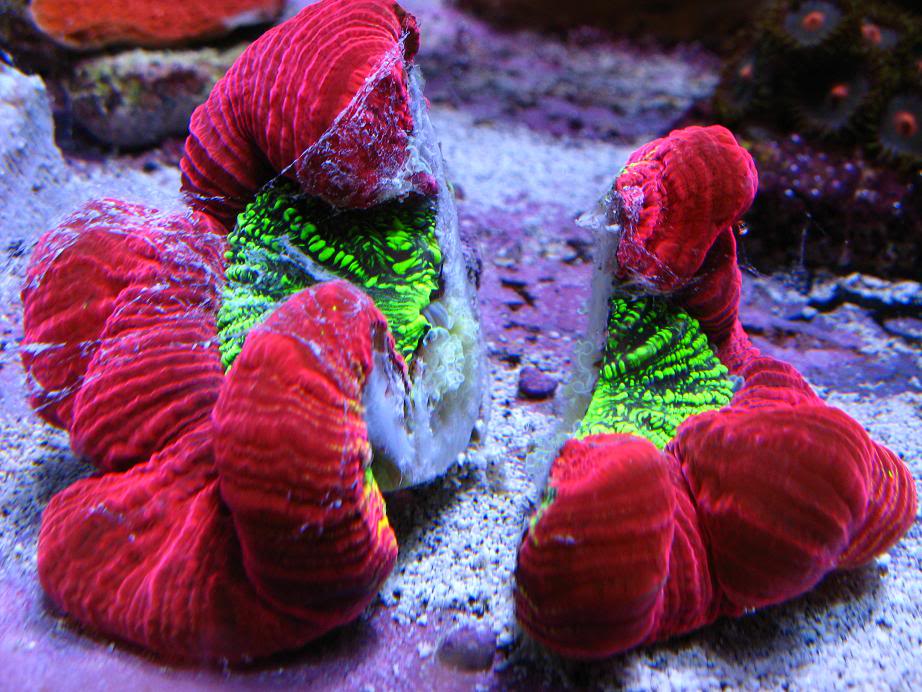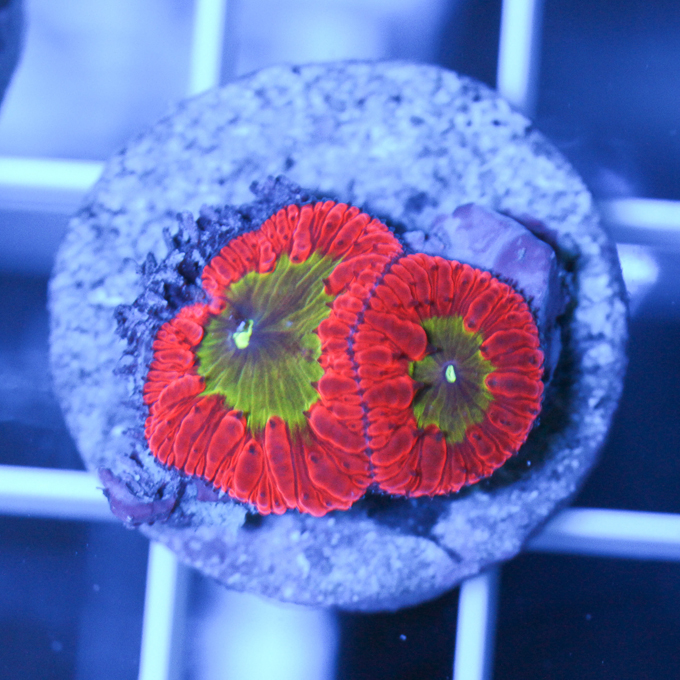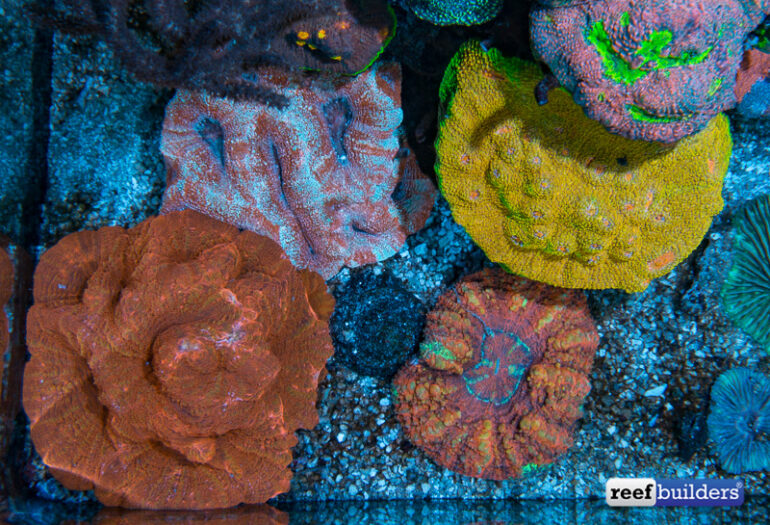LPS corals are morphologically one of the most diverse groups of corals; they come in a broad range of shapes, colors, and textures. While many may assume that Euphyllias and meat-like corals are soft corals, they actually have a skeleton underneath all the tissue.
LPS stands for large polyp stony; Some LPS such as Scolys, Meat corals, and Fungias have one large polyp or corallite. These types of LPS are not conducive to conventional fragging techniques, so we’ll avoid discussing these.

Most LPS corals need to be fragged using a band saw. However, some branching types such as branching Euphyllia, Blastomussa, and Caulastrea can be fragged using coral cutters but it is easier to get a flat edge with a band saw.
Branching corals are the easiest to frag since all you have to do is separate the branches from each other. After you have cut them into singles or doubles shave off the end making the frag stand about three inches high with a flat bottom; the shorter frags will stand up easier when gluing them.

For corals that are encrusting, you have to pay more attention to detail. With corals such as Acans (now Micromussa), Goniopora, Galaxea, sun corals, and Favias, you want to cut with the band saw around the polyps; a typical Acan or Favia frag is about two to four polyps.
Next, cut the bottom of the frag to make it flat as possible; when cutting corners you will need to cut the bottom diagonal to make it flat. Any spaces left over can be filled with glue. Be sure to cut the frag thick enough so that you do not accidentally cut in to the living parts of the coral.

Once your frags are ready to be glued, dry the bottom of the coral and frag disc. Then, add your glue and let it set for a few seconds before adding it back into the aquarium.
For LPS corals such as Lobos, Chalices, Pectina, and wall Euphyllias, you will need to decide where to cut them. Cutting them where they bend and curve usually makes nice sized frags and you can cut those in half if needed.
When your corals are back in the aquarium, gently baste off their mucus. Within the next few hours the polyps will start coming out and the next few days the coral will start to extend its edges.

Good luck fragging your first LPS coral. It is a little more work than cutting soft corals, fragging SPS corals or propagating zoanthids, but can be a fun, creative, and rewarding experience.



